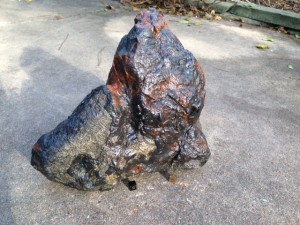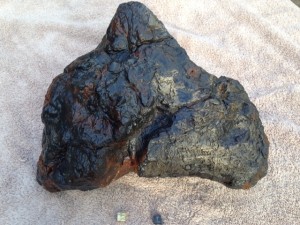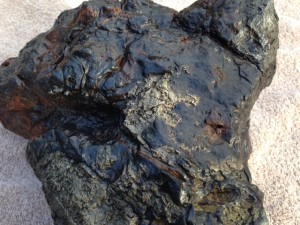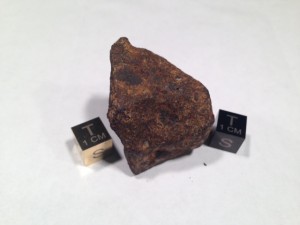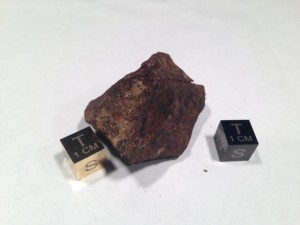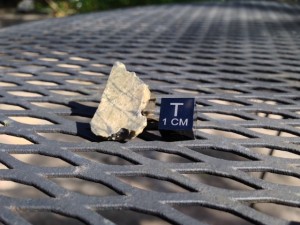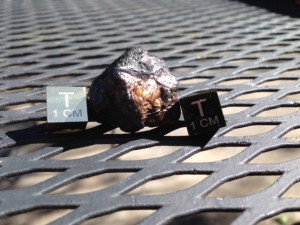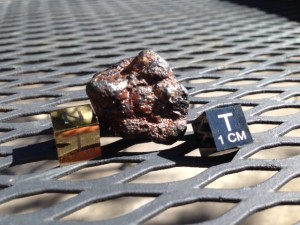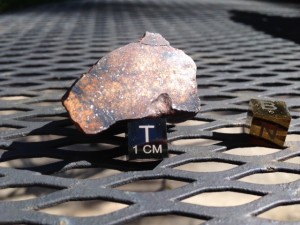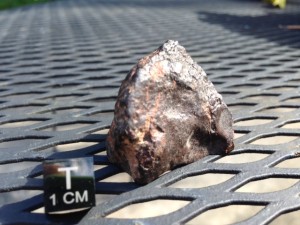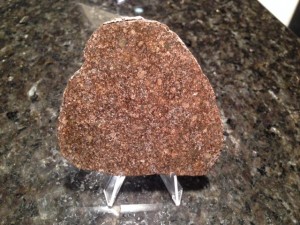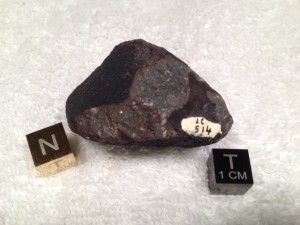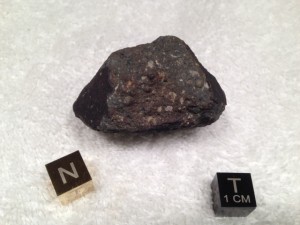The Chinese considered meteorites to be sacred stones from heaven. Nantan iron meteorites represent one of the rare witnessed iron meteorite falls in the world. The fall in 1516 was recorded vividly — “During summertime in May of Jiajing 11th year, stars fell from the northwest direction, five to six fold long, waving like snakes and dragons. They were as bright as lightning and disappeared in seconds.” So far almost all the iron meteorites found in the world are discovered meteorites, that is, no one witnessed any fall. The Nantan is a exception. The Chinese people actually saw the star falling nearly 500 years ago. No one paid attention to the historical record about the fallen stars at Nandan until 1958, when China needed a lot of steel to push the country “Great Leap Forward”. During this period, everyone was told to look for iron ore. Even cooking pots were melted in back yards to produce steel. Some farmers at Nandan, mainly Yao minority, were lucky enough to keep their kitchen tools by finding some heavy Iron-rich rocks. Unfortunately, the “iron ore” would not melt at the backyard steel factory, which puzzled the farmers. They reported to the government and scientists. Researchers arrived and proved the “iron ore” to be iron meteorites.
Detailed mapping showed that the Nantan meteorites were distributed in an area of 27 – 28 Km long and 8 Km wide, overlying Permian limestone and surface soils. The occurrence of northwestern elongated zone concurs with the historical description of falling direction. Nantan meteorites have different shapes: spherical, triangle, flat-iron shaped, elliptical, semi-sheered, tongue-shaped, irregular, and so on. Fresh meteorite surfaces are black, and commonly characterized with angular or round melted pits. The ones deeply weathered are brown and lack of melted surface. Many Nantan meteorites have been restored (acid cleaning) to a bright finish so that the natural etching is evident and coated to prevent oxidation. The size of Nantan meteorites collected ranges from 1 gram to 2,000 kg. Total weight is estimated to be 9,500 kg. The average Chemical composition in the Nantan meteorites are: Fe 92.35%, Ni 6.96%, belonging to IIICD type of iron meteorite based on the taxonomy of Wasson and others (1980). The following trace elements have been detected: C, Cu, Co, S, P, Cr, Ga, Ge, As, Sb, W, Re, Ir, Au, Ru, Pd, Os, Pr, and Mn. Ag, Cd, and Pb isotopes have been analyzed by many Profs. (Words from Sam Maestas, Fossils Meteorites and More)

Deport is an Iron, Coarse Octahedrite (IAB). Found in Red River County, Texas in 1926.
The Deport story told by Blaine Reed and several others is as follows;
These important specimens are among the very first meteorites that Oscar Monnig cataloged for his collection. These were labeled by having a flat spot ground into them and then metal punches were used to apply their catalog number. These all were labeled in the same style as very early Nininger specimens; a number for the locality (number 1 in this case for Deport – the first locality entered into Monnig’s collection) followed by a letter for the order in which the specimen was cataloged starting with the letter A. The curators at TCU had no idea that Monnig had ever used such a system of recording and labeling until these pieces were discovered in a batch of what were supposed to be Odessa specimens. Inspection of their Deport specimens revealed though that they indeed had at least one similar labeled specimen. This was a 1158.7 gram Deport individual (now labeled M1.1, and considered the collections “first specimen”) that has the metal punched label 1B. (Blaine Reed Card)
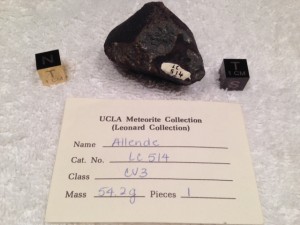
Allende with Leonard Label and Catalog No. LC514 weighing in at 54.2g. Allende fell on February 8, 1969 in the The village of Pueblito de Allende, Chihuahua, Mexico. The Allende strewnfield is enormous measuring some 50 km long and approximately 300 km2 in area. Allende is believed to be the oldest object on Planet Earth & no fewer than nine new mineral species have been found in Allende samples since 2007.


